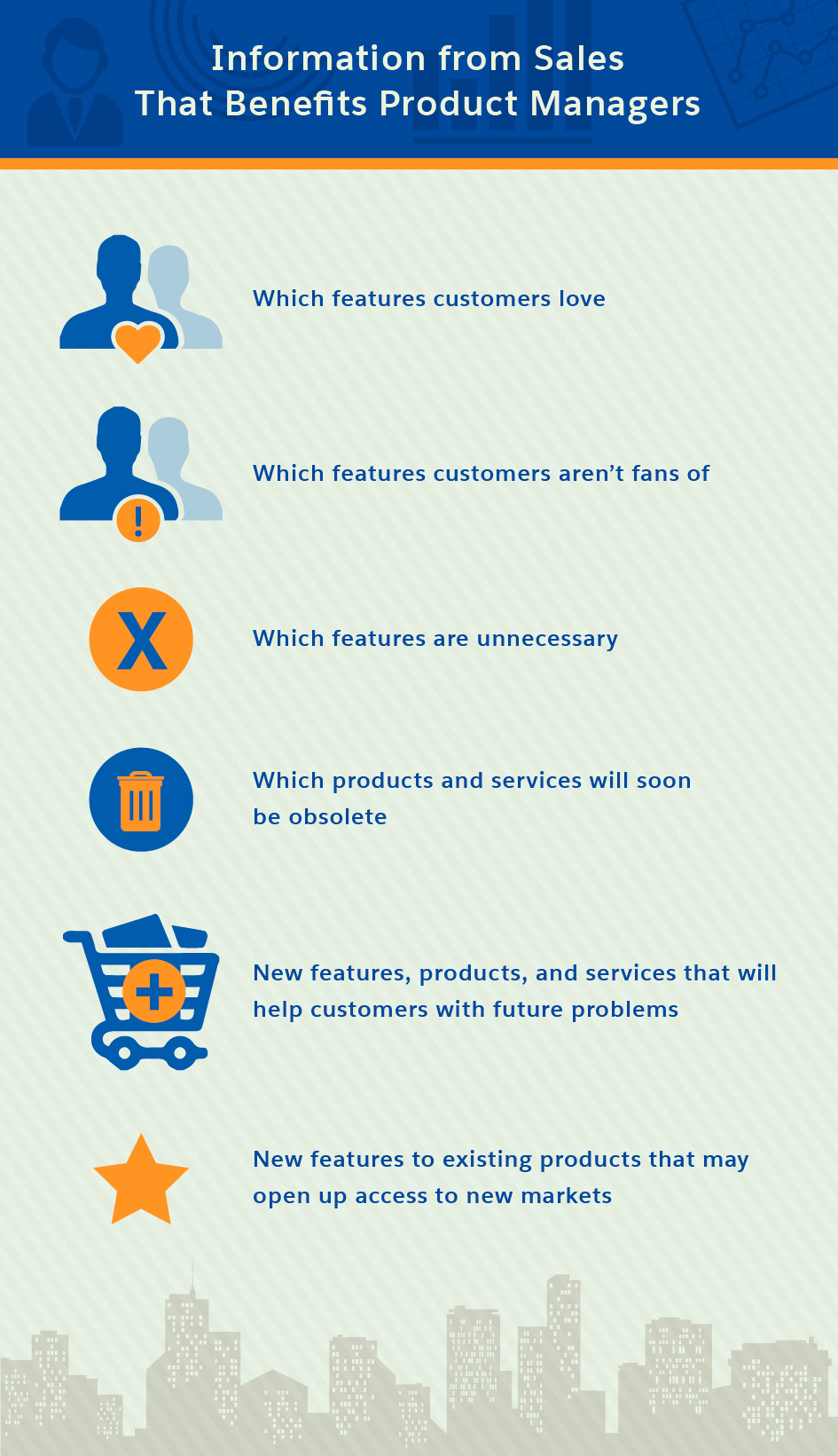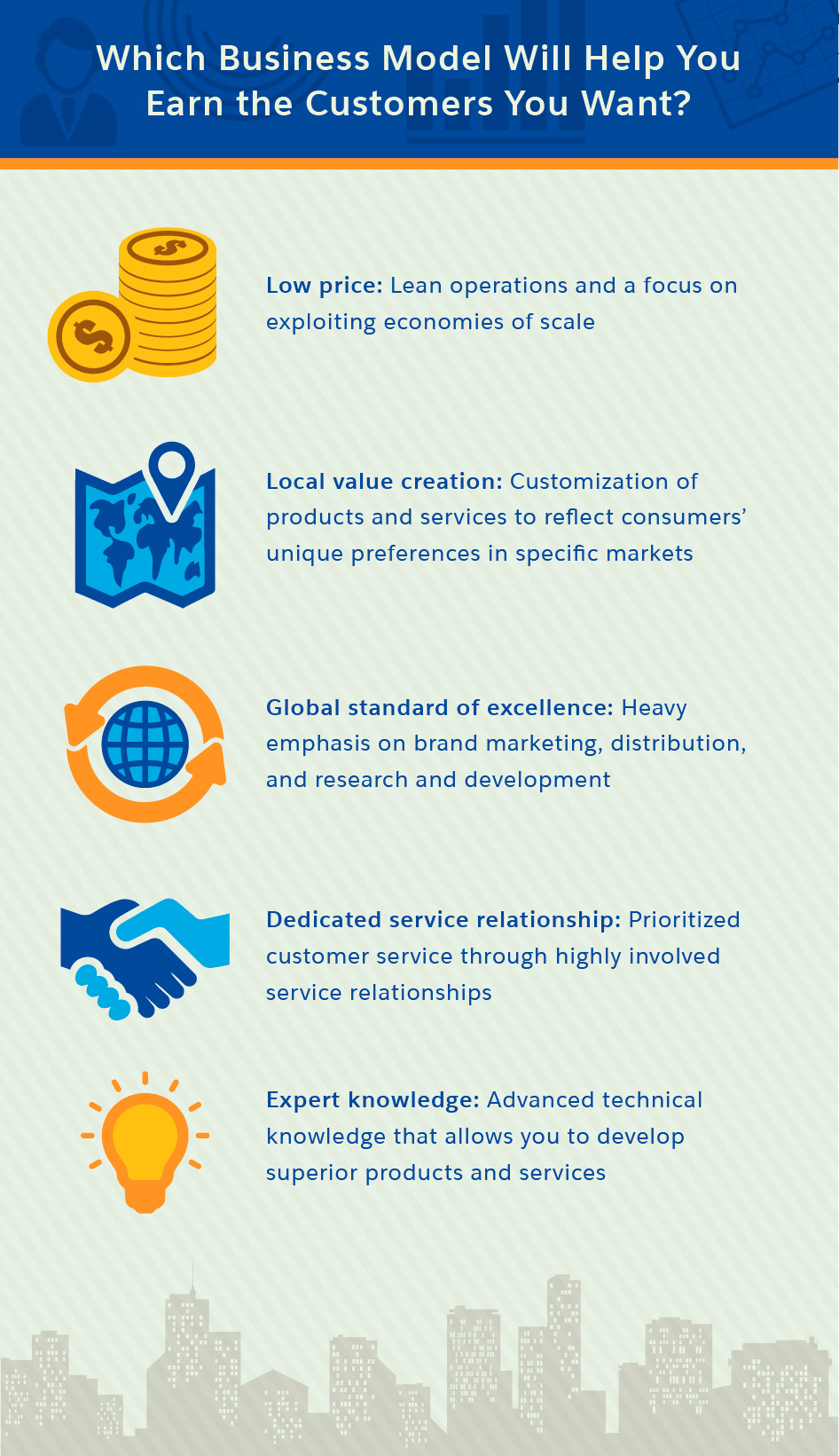 Salespeople serve on your business’s front line. In their active, client-facing role, what they learn from current and potential customers can help make a company better. They often hear brilliant business ideas from the customers they aim to serve. Using their knowledge, sales teams can help their employers build better, more profitable, and popular products.
Salespeople serve on your business’s front line. In their active, client-facing role, what they learn from current and potential customers can help make a company better. They often hear brilliant business ideas from the customers they aim to serve. Using their knowledge, sales teams can help their employers build better, more profitable, and popular products.
In treating their relationships with marketers as more collaborative than competitive, salespeople form value-added alliances that improve the quality and quantity of leads, thus increasing overall sales. By sharing insights gleaned from interactions with customers, sales teams can partner with engineers and product managers to drive customer satisfaction and product innovation. To have a lasting impact on their company’s approach to marketing and contribute to product development, here are five things salespeople must do.

Analyze and share data
Organizations should be open with internal data. Employees armed with sensitive information are empowered to accomplish more at their jobs. Whenever possible, sales reps should share critical sales-related performance metrics with product engineers and marketers.
Three figures worth disclosing to marketers are:
- Number of sales qualified leads (SQLs) that converted into paying customers. With this information, marketers can get a sense of where high-converting leads are sourced. This allows them to scale those channels and ignore low-performing ones.
- Lifetime values for every paid account. This helps marketers calculate the ROI of different lead sources so teams can focus more of their energies on identifying, attracting, and closing big-budget customers.
- Conversion rates at each stage of the sales cycle. Some marketers mistakenly think their jobs end after they source leads and hand them off to their peers in sales. But in understanding where leaks are in the sales funnel, marketers can find opportunities to complement critical stages of the sales process. Solutions such ascontent marketing, email drip campaigns, and retargeting convince leads to give your business another chance.
Demand generation and marketing automation strategist Max Traylor suggests, “Sales can help Marketing improve their lead generation and qualification process by showing the marketing team which leads are higher quality (making it further along the sales process) and why.” Traylor adds, “If Sales doesn’t tell Marketing about unqualified leads that got passed as qualified, the same type of low quality leads will keep showing up at the top of the sales process. By having the two departments communicate with each other, you can improve sales outcomes by giving both Sales and Marketing a complete understanding of what’s working and what isn’t.”

Information sales teams should offer engineers and product managers include:
- Stories about features customers love: A list of features that are easy to sell and can be improved to increase customer acquisition, loyalty, and retention
- Data about features clients dislike: An estimate of how satisfied customers are with specific features to identify those that annoy or frustrate users, causing high customer turnover
- Facts about features no one uses: Anecdotal evidence about tools users ignore that should be removed entirely
With data, companies can make more informed decisions about how best to use their resources to generate more sales from higher paying customers and where to focus their engineering efforts to output products that clients will actually use.
Anticipate future needs and brainstorm new offerings
Sales representatives are empathetic toward their customers’ needs. With an appreciation for things that impact clients’ businesses, salespeople regularly identify opportunities to help their customers grow. Successful sales teams also keep abreast of developments in the industries they sell to. Clever salespeople use that knowledge to forecast trends and brainstorm ways their business can stay ahead of the innovation curve.
According to leadership expert Michael D. Maginn, Ed.D., “[High-performing salespeople] see beyond the immediate situation to identify emerging and future needs, suggesting how these needs might be addressed, not necessarily with the salesperson’s product or service. High performers know potential problem areas, are in touch with trends other customers are engaged with, and challenge the customer to think beyond their perception of the current need.”
Ideas salespeople should relay to product managers include:
- Entirely new inventions that solve problems clients may soon face
- Improvements to existing products that will open up access to new markets
- Recommendations to wind down development of current offerings that may soon become obsolete
Choose the right buyers
One of the challenges sales teams face is in finding the right buyers: customers who have the budget to buy your product, the authority to purchase it, a need for your solutions, and an opportunity to implement your offerings and extract immediate value.
To choose the right customer, Harvard Business School professor Robert Simmons suggests a four-step process. First, identify your primary customer. Make sure there’s an alignment between your company’s values and the client’s values. Know your business’s capabilities—what your core resources are and your unique competitive advantage, and which customers would be best served by your offerings. Your customer must offer you profit potential, or the ability to appropriately mark up your goods and services.
The next step is to understand customers’ values by “leveraging today’s easy and cheap access to data on customer buying habits, preferences, and search activities.” Then you can budget enough resources to win and adopt at least one of five business models: low price, local value creation, global standard of excellence, dedicated service relationship, or expert knowledge. Finally, create a fluid process that makes it easy to adapt to changes in consumer behaviour, market growth, and technological advances.

Marketers who have a firm grasp of who the right buyer is for their company can dedicate themselves to discovering where those customers live online and offline. Knowing that, marketing teams can then execute advertising, branding, and direct response campaigns that engage these prospects and deliver highly qualified leads to sales.
Deliberately extend the sales cycle
Sales advisor Kendra Lee argues firms generate ROI faster by deliberately slowing down their sales cycle. Instead of jumping from a conversation into attempting to close a deal, salespeople should take time to earn buyer trust and nurture leads. “In their haste to close a sale, they try to gather all the information needed to write a proposal in just one meeting. Then they send the proposal and try to close … without much success,” says Lee. “This ‘one-and-done’ approach is ineffective for a variety of reasons, particularly in high-stakes sales.”
Salespeople, instead, should team up with marketers to educate prospects about offerings, gather information about buyers’ motivations, and train customers to want your product. Strategic marketing campaigns, coupled with multiple sales meetings, put potential clients in a purchase-ready mindset.
Identify product shortcomings and synthesize customer requests
In conversations with potential clients, even the most talented salespeople may find their products fall short in fulfilling buyers’ needs. While a special breed of salespersoncan convince customers to forget some criteria, any smart professional would realize the long-term need to introduce new products and add extra features to current offerings. Intelligent product development allows firms to acquire more customers and retain their existing client base.
To identify product shortcomings, ask:
- Which features do customers complain about?
- What do customers wish you offered?
- Which products or services have they stopped purchasing and why?
- What improvements have they suggested?
- Why did they say “no” to your sales proposal?
Sometimes customers demand certain improvements to products that your firm has never even considered. First, it is important to strategically gather feedback from prospects, current customers, and former clients through in-person meetings, phone conversations, email exchanges, and surveys. Next, process customer feedback into tangible feature requests or concrete examples of new product inventions. Sales representatives should focus on solutions that help customers achieve a very specific outcome. That provides the basis for profitable product innovation.
Anthony W. Ulwick wrote in Harvard Business Review, “The process of innovation begins with identifying the outcomes customers want to achieve; it ends in the creation of items they will buy. When desired outcomes become the focus of customer research, innovation is no longer a matter of wish fulfillment or serendipity; it is instead a manageable, predictable discipline.”
Final thoughts
Though salespeople are primarily responsible for securing new accounts, they have the opportunity to leverage their marketing colleagues to improve close rates, and their peers in engineering and product to develop tools that add value to users. By working closely with the marketing and product teams, salespeople help their teammates drive meaningful business results and increase their employer’s bottom line.
To view the original article Click Here

No comments:
Post a Comment